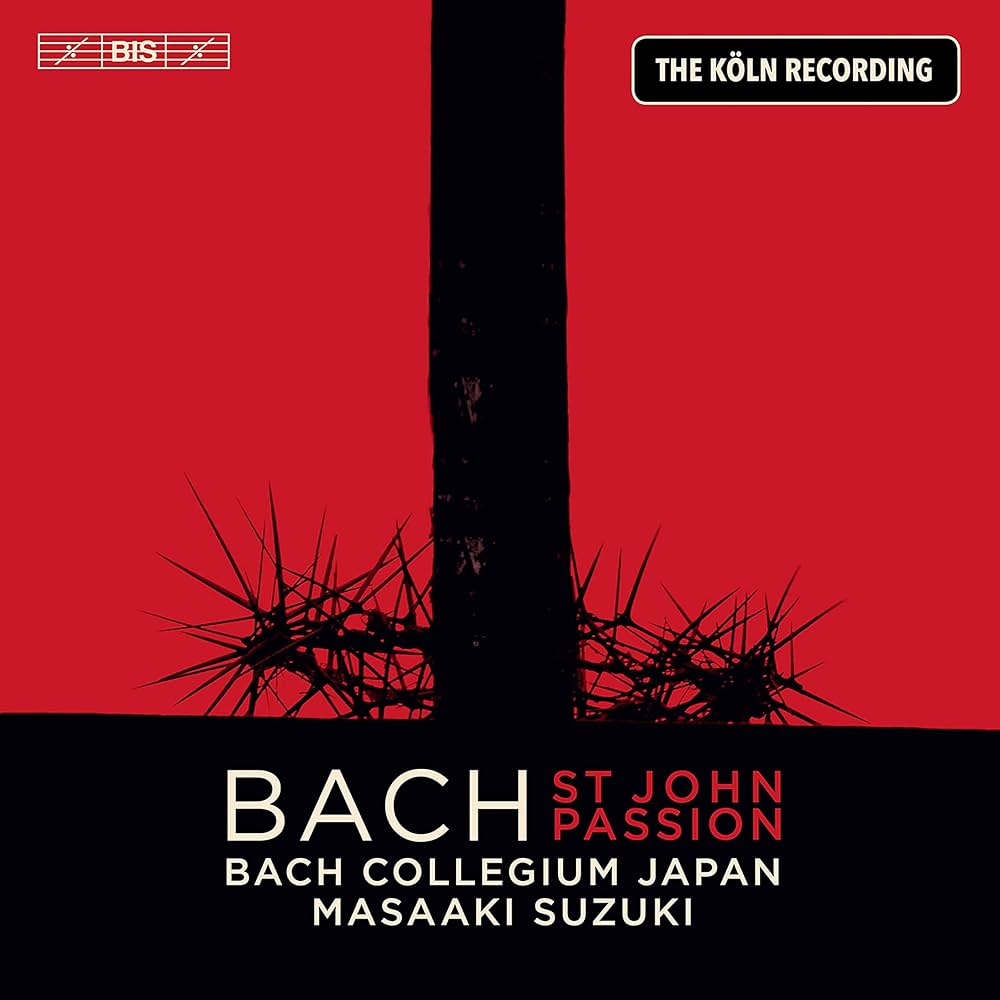About John Passion
Passion composed by Bach for Good Friday, April 7, 1724. Compared to the Matthew Passion, the story unfolds more quickly. Immediately after the first chorus, Jesus is arrested and the scene quickly shifts to Peter’s denial. There are no scenes of the perfume of Bethania or the agony of Gethsemane, which were present in the Matthew Passion.
The opening chorus is dark and gloomy. The woodwinds play a suspention notes which foreshadows the story of the Passion to come, intertwined with the shuddering movement of the strings, and the orgel punkt contunue in 9 measures long on them. Then the chorus begins to sing “Herr, unser Herrscher”. The movement of the strings shifts to a bass continuo, ending on a D major chord before returning to the beginning of the piece.
Judas arrives with Roman soldiers and Pharisees to have Jesus captured. Jesus is captured and taken to Annas who is the Father-in-law of the high priest Caiahas. Here the alto aria “Von den Stricken meiner Sünden” is sung. Peter and another disciple follow Jesus. There, the soprano sings the aria “Ich folge dir gleichfalls mit freudigen Schritten”. Here, Bach has two flutes play in unison an obbligato in the key of B-flat major, a key that does not sound well for flutes.
Immediately after this, however, Peter denies it three times, saying, “I do not know Jesus”. Compared to the Matthew Passion, the aria “Ach, mein Sinn” immediately after Peter’s denial expresses the tragedy more directly. For example, the word “Sinn” is marked with a diminished seventh chord, and all the voices stop moving on a dotted half-note. This expresses Peter’s deep contrition. On the other hand, “Erbarme dich, mein Gott” from the Matthew Passion expresses more inner “anguish” with the gentle melody of Siciliano.
The second part. After the chorale “Christus, der uns selig macht” Pilate’s inquisition begins. In the Passion of John, Judas’ repentance and suicide are not depicted, but he has already committed suicide at this point.
At dawn, the people take Jesus to Pilate, the Roman governor of Judea. They had a soul to have Jesus crucified as a “traitor”. Pilate, however, tells the Jews that Jesus cannot be found guilty. He also asked them if they wanted Jesus to be released, as it is customary to release one sinner at Passover. The Jews reply that they want Barabbas, the robber, to be released, not Jesus. After this dramatic exchange between Jesus, Pilate, and the Jews, the tenor sings the aria “Erwäge, wie sein blutgefärbter Rücken”. There is another version of this aria, “Mein Jesu, ach! dein schmerzhaft bitter”.
Jesus is crowned with thorns and clothed in purple by the soldiers. Pilate insists that Jesus is innocent, but the Jews respond that “anyone who calls himself the Son of God deserves to die” according to the Torah. Pilate still tries to get Jesus released, but the Jews begin to threaten him, and he is finally handed over to them. Jesus is made to carry the cross and made to walk to the hill of Golgotha. The 24th aria, “Eilt, ihr angefochtnen Seelen” is sung by the bass coloratura, interrupted by a chorus of questions from the crowd.
Pilate’s character can be seen as a man who, despite his apparent righteousness, was ultimately motivated by self-preservation, and was a bureaucrat of the type that is common even today, in that he shifted the blame for the execution of Jesus onto the Jews.
There they crucified Jesus. They also crucified two others with Jesus, one on each side with Jesus in the middle. Pilate wrote a “charge sheet” and hung it on the cross. It read, “Jesus of Nazareth, King of the Jews”. Since the place where Jesus was crucified was near the city, many Jews read the charge sheet. It was written in Hebrew, Latin, and Greek. The Jewish chief priests asked Pilate to write, not “the King of the Jews” but “called himself the King of the Jews”, but Pilate would not comply.
Near the cross of Jesus were his mother Mary, her sister, and Mary Magdalene. Jesus pointed to one disciple and said to his mother Mary, “See! It is your Son!”. That disciple was John, who would henceforth be Mary’s guardian and caretaker. In the 28th chorale, this is sung. Jesus said, “I thirst.” and the soldiers gave him sour wine in the sponge at the end of the spear. Jesus uttered the words, “It is done”.
In the 30th aria, alto sings with the slow walking melody of the viola da gamba. and the alto sings, “O Trost vor die gekrankten Seelen !”. The recitative then announces the death of Jesus.
The famous “Stabat Mater” by Pergolesi describes the Passion of Jesus from the standpoint of his mother Mary, and Bach arranged this piece himself (“Tilge, Höchster, meine Sünden” BWV 1083). https://bit.ly/455Orh6
The 39th chorus “Ruht Wohl, Ihr Heiligen Gebeine” brings tears to my eyes again and again. What a tender and sad melody. No one can listen to this song and not be moved by it. In the John Passion, the chorale “Ach, Herr, Lass Dein Lieb Engelein” is sung after this. With these powerful words of faith determination, people will finish listening to the John Passion with a sense of security and joy.
I have CDs (including downloads) of the John Passion, including La Petit Band, BCJ, and the new recording by Andreas Reize that I mentioned the other day. I also can’t leave out Harnoncourt’s YouTube video.





